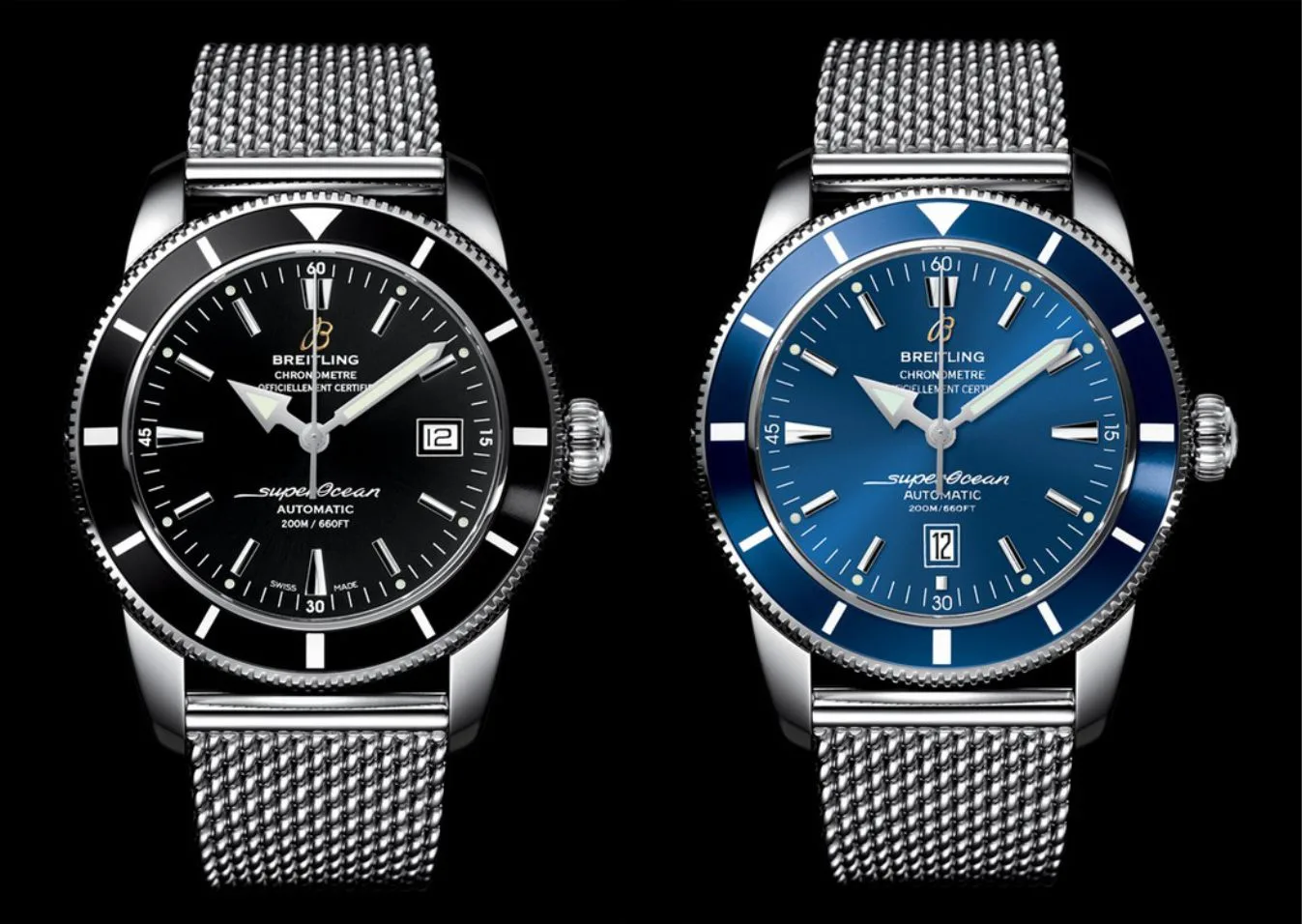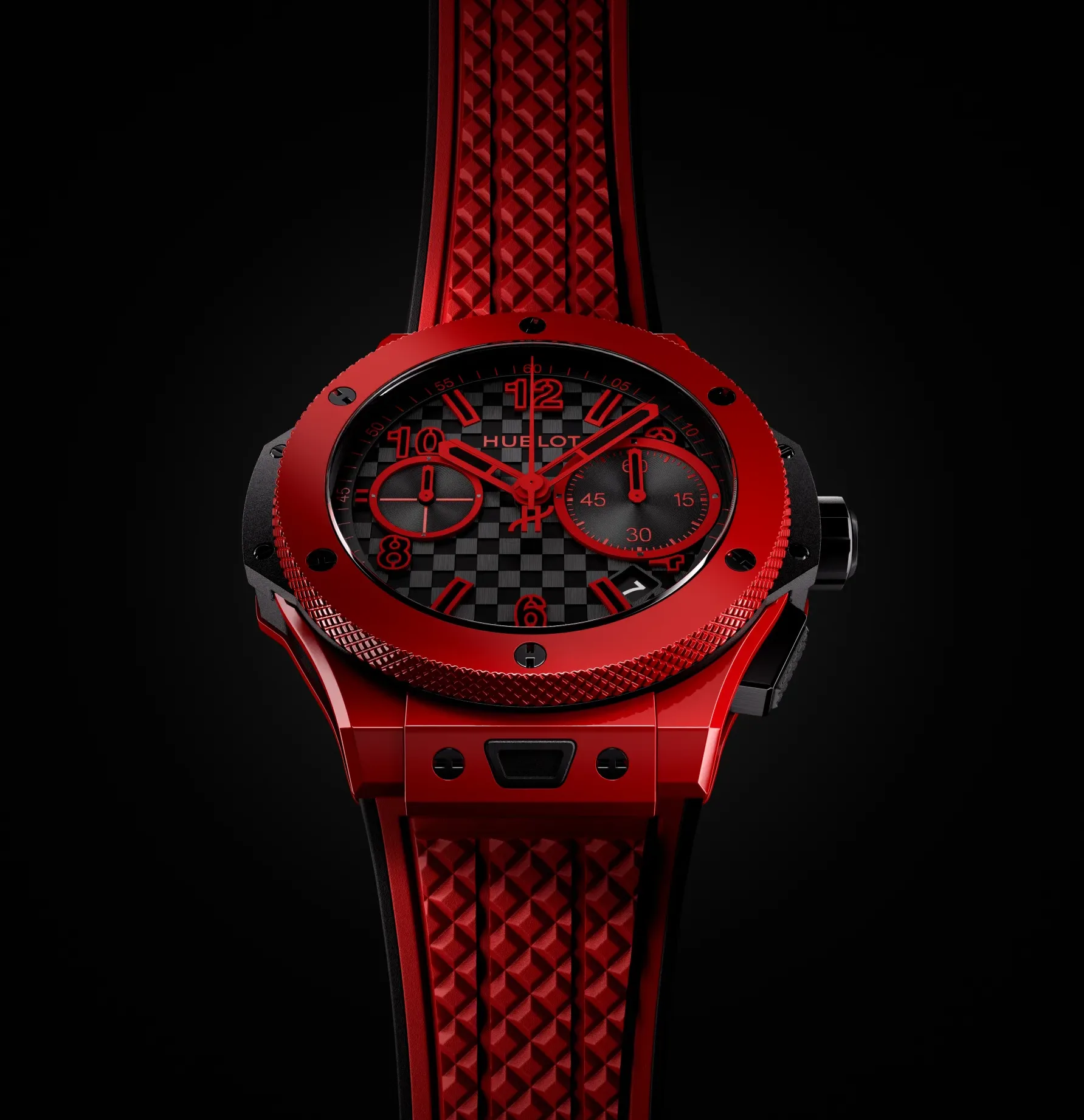By Carl Scutt
The Breitling SuperOcean as many of our readers will know, first appeared in 1957, the Superocean Heritage collection being a vintage-inspired release. These days, of course, there are many flavors sizes, colors, and configurations but the main idea behind the design still flies.
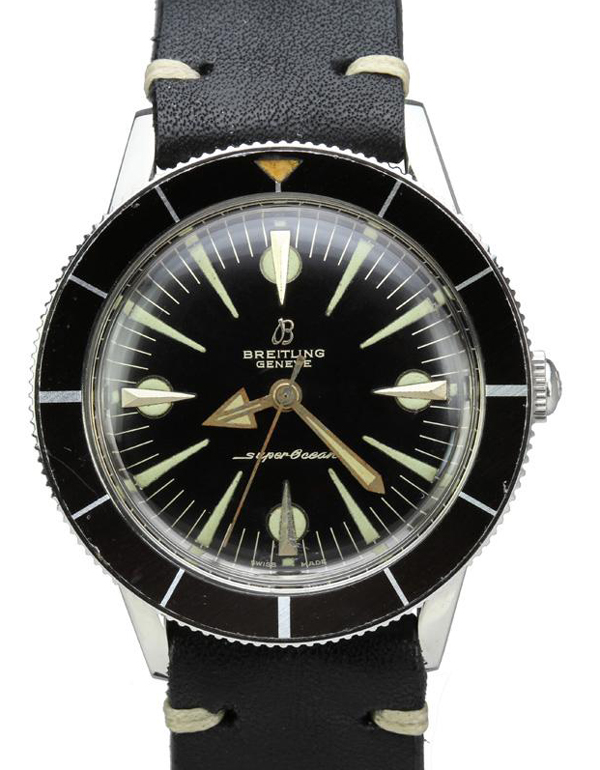
The original is still a stunning piece that’s unmistakably the founding member of the same family, the patriarch, the daddy of the group and its entire offspring.
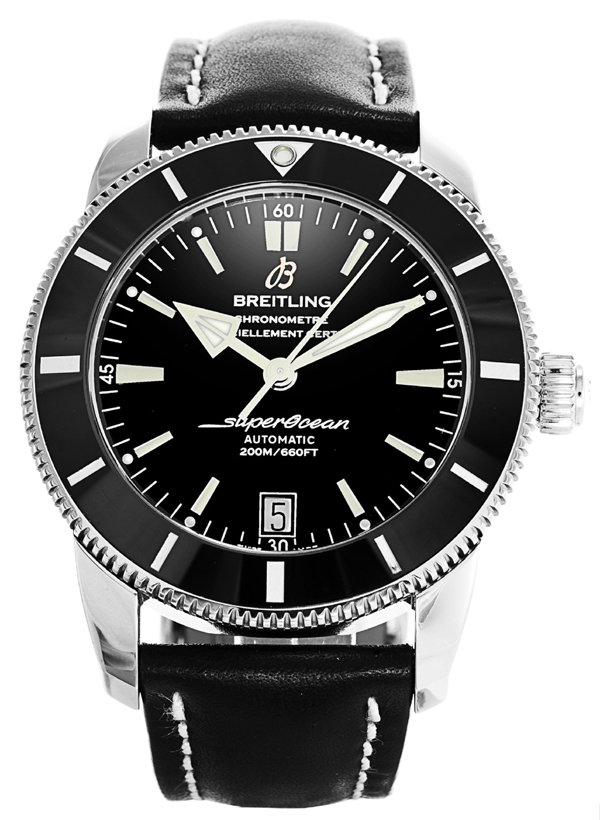
Dig the New Breed
Interestingly, there seems to be an exchange of ideas and hardware between Breitling and Tudor, the sister company to Rolex. The new Breitling caliber B20 is based on the Tudor Caliber MT5612 used in their Black Bay watches, and the Tudor’s new Black Bay chronograph uses the Breitling B01 caliber, so it just goes to show, it’s a small world.
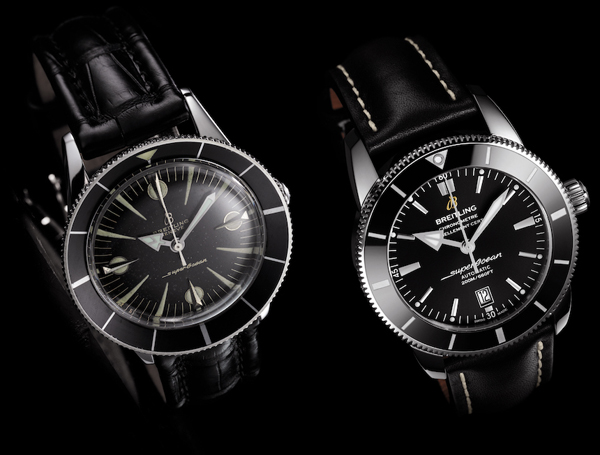
The Difference
Looking at these together the similarity is unquestionable but the changes between ‘then and now’ are really quite striking when we look at them side by side.
The new SuperOcean has been given an altogether modern makeover with refinements that can only come with technological and material advances. It’s certainly true that a lot of time is missing between 1957 and 2017 and throughout this period the changes have been gradual. However, the best way to appreciate the evolutionary result is to see the first incarnation alongside its modern day successor.
In fact, successor is probably the wrong choice of word to describe this piece, perhaps it should be simply known as its forefather, because the original is easily as popular as the present day incarnation.
The changes in some cases are obvious like the old bezel is replaced with the new ceramic ring around the minute track giving a seamless look of a high-end product.
The hour and minute hands on the other hand are almost identical although slightly more defined including the steel partition in hour hands’ luminous arrowhead. The dials, again are at first gland very similar but closer inspection shows the new piece has nice solid oblong hour markers with a double carrot at 12 o’clock.
The knurling around the circumference is understandable sharper and the crown somewhat more sturdy, but while the real estate remains the same, Breitling have found room for a date window at 6 o’clock, and the addition of ‘Automatic 200M/660FT’ above the date window, and Chronometre Officiellement Certifie at below the logo at 12 o’clock.
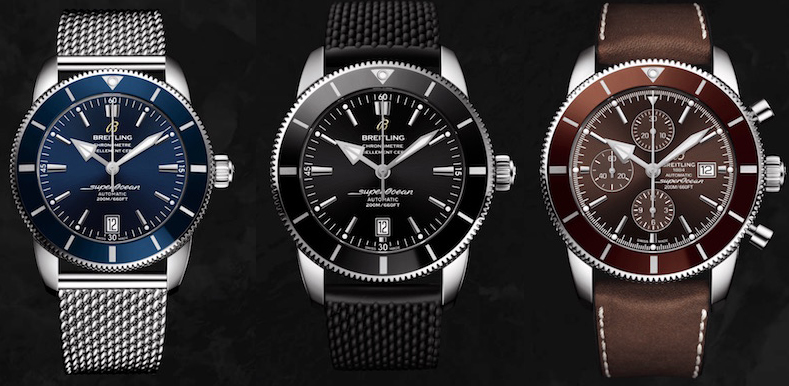
The Superocean Collection
As always the Breitling Superocean new collection will be available in a number of flavors, a 42mm and 46mm three-hand automatic with date and a 46mm automatic chronograph. The available dial colors are Gun Blue, Stratus Silver, and Black while straps and bracelets will be available in leather, crocodile skin, or the new rubber-leather.
The price points here are:
Breitling Superocean Heritage II 42mm
on rubber strap $4,075
on leather strap $4,500
on a bracelet $4,700
Breitling Superocean Heritage II 46mm
on a rubber strap $4,375
on leather $4,500
on a bracelet $4,700
The Breitling Superocean Heritage II Chronograph that features the old caliber B13 based on the Valjoux 7750 automatic movement operates at 28,800vph with a power reserve of 42 hours.
$5,415 on a rubber strap
$5,840 on leather strap
$6,040 on a bracelet
Final Word
The idea of the evolution of a classic is something I have been thinking about for a while and as I continue to evolve my own ideas about the subject the more I’m certain of one thing. A classic needs two distinct things; the first thing is a model of perfection or near perfection, at the very least something that captures the imagination, because it’s this that’ll carry the idea from generation to generation.
The second thing is; the will and drive to continue to innovate and never shy away from pushing the boundaries. This is when new generations pick up where the last left off, to product the next generation of exciting products.
So, you see, a classic is never a classic if it’s a one-off, or its successors fails. A classic needs a beginning and a present that represents its position in the market and the peoples’ imagination.

